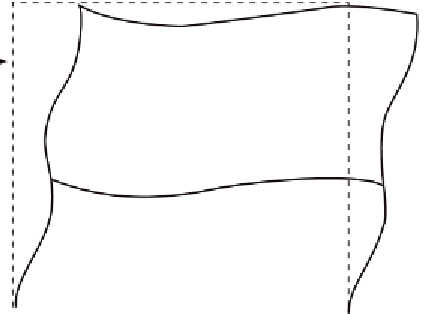Civil Engineering Reference
In-Depth Information
where
C
d
= deflection amplification factor presented in ASCE Table 9.5.2.2
δ
xe
= elastic lateral deflection (in.) due to the code prescribed seismic forces
I
= occupancy importance factor defined in 11.6.1
δ
x
δ
x-1
Figure 11-11 Interstory Drift,
11.9 P-
EFFECT
Seismic forces cause the structure to deflect laterally. As a result, secondary moments are induced in the
structural members due to the displaced gravity load as shown in Figure 11-12. This secondary moment
effect is known as the P-
effect. P-
effects are not required to be considered if the stability index
θ
is equal
to or less than 0.10. The stability index
θ
is calculated as follows (ASCE Eq. 12.8-16):
P
x
Δ
V
x
h
sx
C
d
θ=
where:
P
x
= total unfactored vertical design load at and above level x (kips)
= design story drift (inches) occurring simultaneously with V
x
.
V
x
= seismic shear force (kips) acting between level x and x-1
h
sx
= story height (feet) below level x
C
d
= deflection amplification factor defined in 11.8
The stability coefficient,
θ
, shall not exceed
θ
max
calculated as follows:
0.5
β
θ
max
=
C
d
≤
0.25
where:
β
= the ratio of shear demand to shear capacity for the story between level x and x-1 which may
be conservatively taken equal to 1.0.























Search WWH ::

Custom Search